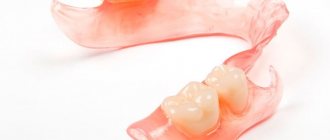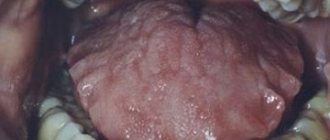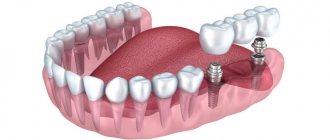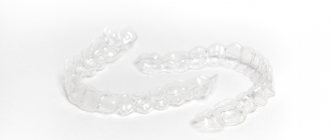All those who have had to deal, to one degree or another, with the problem of treating injuries and diseases that require immobilization (immobilization of limbs, joints) know how much trouble this method brings. For centuries, the material of choice for immobilization has been gypsum.
Of course, this material has a number of advantages necessary for the treatment of patients. Plaster is an inexpensive material; unhardened plaster is very plastic, which allows you to give the required shape to the bandage. Plaster immobilization is very simple to manufacture. But along with many positive qualities, gypsum immobilization has a number of significant disadvantages. First of all, in order for the bandage to have sufficient strength, it requires the application of many layers. This causes the bandage to become thick and heavy. With such a bandage it is difficult to move and even take care of yourself. In our dynamic age. When literally every minute counts for many people, an injury associated with the need to wear a cast becomes a real tragedy. After all, with a thick and heavy bandage it can be difficult to get to the kitchen and toilet, let alone to work.
The second, but no less important problem is related to the high hygroscopicity of gypsum. Gypsum easily absorbs and retains moisture for a long time, which is why it loses its hardness and rigidity. A bandage that accidentally falls under water immediately loses its medicinal meaning. And there is only one thing you can do with it - throw it away. This raises the problem of hygiene.
It is quite difficult to maintain basic hygiene principles with a plaster cast. It's hard to even wash your face. It is possible to take a shower only in parts, carefully wrapping the injured limb in plastic. You have to forget about the bathroom during treatment. At this time, dead epithelium accumulates under the bandage, the skin under the bandage sweats, and sometimes even an unpleasant odor occurs. Those who had to wear a plaster cast for a long time must remember how unsightly the limb looks immediately after the plaster is removed.
Gypsum is a material that, after drying, crumbles and stains clothes and bedding. On the bed of a victim who is in a cast, there are always plaster crumbs in abundance. And the bed itself looks untidy. When wearing immobilization for a long time, there is often a need for periodic dressing changes. The synthetic materials Scotchcast and Softcast do not have these disadvantages. Polymer immobilizing bandage - artificial plaster Scotchcast Plus Scotchcast Plus can completely replace a plaster cast in the treatment of fractures. The combination of the extraordinary strength of Scotchkast Plus and the lightness of the material (4-5 times lighter than gypsum) makes its use much more comfortable. The material is non-toxic and does not cause allergic reactions. It allows evaporation from the skin and oxygen from the outside (“breathes”), which prevents itching and maceration. The Scotchcast Plus artificial plaster bandage is not afraid of moisture, so the patient can take a shower.
Advantages of plastic gypsum compared to traditional
- Quick fix . You can change and fix the polymer bandage in 20-30 minutes at home.
- Simple modeling . The bandage takes on the required shape, making it suitable for fixing even hard-to-reach parts of the body and joints.
- Sturdy mount . The material ensures immobilization of the injured limb throughout the entire recovery period.
- Water resistance . The bandage can be wetted: take a full bath or shower, or swim.
- Safety . The product does not cause irritation, rashes, skin inflammation, or diaper rash.
- Bandwidth . It does not need to be removed to perform a control x-ray, computed tomography or magnetic resonance imaging.
- Wide selection of colors . The polymer bandage is available in different colors, which is especially important when applied to children.
Consult your doctor
Each type of polymer plaster is indicated for certain injuries and fractures. Only your attending physician can determine which one is right for you.
A plastic bandage does not cancel visits to the doctor and does not speed up the healing of broken bones, but allows you to make treatment as comfortable as possible.
In medical matters, traumatologist-orthopedist Natalya Vladimirovna Sokolenko will help you determine the type of polymer plaster that is right for you.
You can find out more detailed information or make an appointment by phone. +7 (4712) 46-03-03.
Application of plastic plaster
You can apply a plastic cast to an adult’s or child’s arm, leg, ankle, and other parts of the body at home. For this you will need:
- Polymer bandage . Can be of different hardness and type. The doctor must select the specific type and width of the product.
- Plaster lining . Can be stocking or rolled cotton wool. The first is used for injuries to the limbs. The second is in cases where a stocking lining cannot be used. A combination of them is allowed.
- Latex gloves . When applied, the impregnation of the dressing should not come into contact with the skin.
- Warm water . Temperature is about 20-25 degrees Celsius.
To fix synthetic plaster, you must adhere to the following algorithm:
- Put on gloves and remove the liner from the packaging. The hosiery must be put on the limb, cutting off the excess. The bandage pad should simply be wrapped around the injured area.
- Take a bowl of warm water and dip the polymer bandage into it. The roll of bandage must be squeezed 2-3 times without removing it from the water so that it absorbs moisture.
- Remove the medical polymer plaster from the water and apply it with smooth spiral movements to the arm, leg, collarbone or any other damaged part of the body. Each previous turn must be overlapped by about half the width of the next one.
After 3-5 minutes the plaster will be fixed. During this time, the material can be modeled. Under normal conditions, all-polymer materials will harden in 20-25 minutes.
What types of artificial plaster are there?
There are several types of polymer gypsum. The most famous are scotchcast, softcast and turbocast.
Scotchcast is a polymer plaster, strong and rigid, due to which it reliably immobilizes the fracture. The lightest of all artificial bandages. A special lining stocking is worn under it so as not to injure the skin. Scotchcast comes in different colors, which will appeal to children and lovers of bright colors.
Softcast allows you to create bandages of varying stiffness. After hardening, the material remains semi-rigid, which allows you to maintain muscle mobility in the damaged area. At the same time, the material is flexible, but not stretchable, which helps maintain its original shape. It is used not only for fractures, but also for sprained limbs.
Turbocast is the most famous polymer gypsum made of thermoplastic. It makes it possible to give the bandage any shape, which makes it indispensable for the most complex fractures, including in children and adolescents. The special design allows the patient to independently remove and put on the bandage (with the doctor’s permission).
Plaster or orthosis: which is better to choose for a fracture?
Table of contents
- Indications for the use of gypsum
- Indications for using the orthosis
- What is better to choose for a fracture: plaster or orthosis
- Advantages of contacting MEDSI
Should I use a plaster or orthosis for fractures?
This question interests many today. Unfortunately, it is impossible to give a definite answer to this. Let's figure out why and find out what determines the choice in favor of one or another product.
Indications for the use of gypsum
Plaster casts are still widely used in traumatology. They are prescribed to adults and children. As an independent method of treatment, plaster bandages are indispensable for fresh fractures of the hands, forearm, foot, ankles, etc.
They are not used only for local infectious complications,
which include gangrene, ischemic limb disorders, purulent leaks, phlegmon and anaerobic infections.
It should be noted that today there are several varieties of gypsum. Polymer is increasingly replacing the traditional one. Instead of a cotton bandage, a special mesh impregnated with polyurethane resin is used. Such plaster can be made in the form of a bandage (activated by water) or blank sheets (activation occurs under the influence of temperature changes).
Polymer products:
- allow you to get a “breathable” bandage that allows air to pass through well
- stretch in different directions and allow you to get a fixator for any part of the body
- are distinguished by increased ease of use due to their relatively low weight
With modern dressings you can take a bath. It is enough just to dry the product with a hairdryer after hygiene procedures. In addition, polymer gypsum is more elastic. It reduces the risk of muscular dystrophy. The polymer is permeable to X-rays. This provides diagnostic capabilities.
Of course, modern plaster is not free. It is also important that its application is carried out using a special technology. Not every medical institution has staff who own it.
Which plaster is better for a fracture? Of course, polymer. But it should be borne in mind that it is not always available in emergency rooms.
Indications for using the orthosis
Wearing such a product allows you to stimulate bone healing and stabilize joints, reducing the load on the damaged area. In addition, modern designs help strengthen ligaments, muscles and tendons. Additionally, they minimize pain and reduce the risk of swelling.
Also indications for wearing it are:
- post-traumatic conditions
- arthritis and arthrosis of the joints
- problems with ligaments: weakness, congenital instability, acquired damage
- incorrect position of the feet (when the child turns his feet inward, walks on his toes, etc.)
The products are also recommended during the recovery phase after surgery.
What is better to choose for a fracture: plaster or orthosis
Only a doctor can give an exact answer to this question. However, there are certain standards.
Instead of a plaster cast, an orthosis is not prescribed for complex closed and open fractures, in the presence of bleeding wounds, or in the early stages of therapy. First, it is always better to apply the strongest bandage possible, which will ensure complete immobilization of the damaged area. Once the fusion process has started, you can remove it. Thus, orthoses are often used after casting.
At the same time, the use of a modern design will allow you to closely monitor the healing process. If necessary, the orthosis can be easily and quickly removed for X-ray or other diagnostics and a number of manipulations. The fixation of the structure can also be strengthened or weakened. This improves patient comfort.
Using an orthosis on the ankle and other parts of the legs or arms instead of a cast allows you to:
- for an overall reduction in recovery time
- to reduce the number of complications after various injuries
- to improve the general condition of the patient
Important! For fractures, both rigid and semi-rigid structures can be used. The choice in favor of a certain one is made exclusively by the doctor. You can choose a modern medical product exactly in size and taking into account all available indications. It is very important that the orthosis is used by the patient correctly, in compliance with all recommendations. Only in this case will the process of rehabilitation after a fracture be as painless as possible and require a minimum amount of time.
Advantages of contacting MEDSI
- Fast recovery with minimal discomfort.
This is achieved through the use of ankle and other orthoses instead of plaster. Also, modern designs maintain normal blood supply to tissues and are lightweight, resistant to moisture and easy to use. - Experienced doctors.
Our orthopedic traumatologists always take into account the patient’s indications and characteristics when selecting therapy. This allows you to achieve its pronounced effect - Comfort of visiting MEDSI.
Our clinics are located near the metro. Appointments must be made in advance. This allows you to avoid queues and long waits
To get help with fractures, use all the necessary services and ask questions about the conditions for their provision, call + 7 (495) 7-800-500. Our specialist will advise you and suggest the optimal time to visit the clinic. Recording is also possible through the SmartMed application.
Classification
According to the requirements of the international hardness standard, the following types are distinguished:
— soft gypsum, used for making impressions in orthopedic dentistry;
- ordinary (medical) plaster, used in general surgery and orthopedics;
— hard plaster, intended for making models of jaws in dentistry;
— especially strong plaster, used to create collapsible models of jaws;
- ultra-strong plaster, intended for models in dental orthopedics that require ultra-high strength, made with the addition of synthetic components.
When mixed with water, after 5-7 minutes the gypsum begins to harden, gaining strength. The material acquires its final characteristics and hardness after complete drying.
Story
Treatment of fractures by fixation of fragments using various hardening agents has been carried out for a long time. So, even Arab doctors used clay to treat fractures. In Europe by the mid-19th century. hardening mixtures of camphor alcohol, lead water and whipped egg white were used (D. Larrey, 1825), starch with gypsum [Lafarque, 1838]; Starch, dextrin, and wood glue were also used.
One of the first successful attempts to use gypsum for these purposes was made by the Russian surgeon Karl Giebenthal (1811). He doused the injured limb with plaster solution, first on one side, and then, lifting it, on the other, and received this. cast of two halves; then, without removing the casts, he attached them to the limb with bandages. Later, Cloquet (J. Cloquet, 1816) proposed placing the limb in a bag of plaster, which was then moistened with water, and V. A. Basov (1843) - in a special box filled with alabaster.
Essentially, all of these methods did not use plaster casts, but plaster molds.
For the first time, the Dutch surgeon Mathysen (A. Mathysen, 1851) began to use bandages made of fabric previously rubbed with dry plaster for the treatment of fractures. After applying a continuous bandage, it was moistened with a sponge. Subsequently, Van de Loo (J. Van de Loo, 1853) improved this method by suggesting that a cloth rubbed with plaster be moistened with water before applying a bandage. The Royal Academy of Medicine of Belgium recognized Mathijsen and Van de Loo as the authors of the plaster cast.
However, the invention of the plaster cast - the prototype of the modern one, its widespread use for the treatment of patients with bone fractures belongs to N. I. Pirogov, who described it in a special brochure and book "Ghirurgische Hospitalklinik" in 1851-1852. The book “Mapped alabaster plaster cast in the treatment of simple and complex fractures and for transporting the wounded on the battlefield” (1854) published by Pirogov is a work that summarizes previous information about the method, indications and technique of using a plaster cast. Pirogov believed that with Matheisen’s method, alabaster impregnates the canvas unevenly, does not hold tightly, easily breaks and crumbles. Pirogov’s method was as follows: the limb was wrapped in rags, additional rags were placed on the bony protrusions; dry gypsum was poured into water and a solution was prepared; shirt sleeves, long johns or stockings were folded into 2-4 layers and lowered into the solution, then stretched “on the fly”, smeared with hands on both sides of each strip. Strips (splints) were applied to the damaged limb and reinforced with transverse strips, applied so that one covered half of the other. Thus, Pirogov, who first proposed the application of plaster casts impregnated with liquid gypsum, is the creator of both circular and splint plaster casts. The promoter and defender of the plaster cast was the professor of the University of Dorpat, Yu. K. Shimanovsky, who in 1857 published the monograph “The plaster cast, especially for the use of military surgery.” Adelman and Szymanowski proposed an unlined plaster cast (1854).
Over time, the technology for making plaster casts has improved. In modern conditions, factory-packaged plaster bandages of certain sizes are predominantly used (length - 3 m, width - 10, 15, 20 cm), less often - such bandages are made manually.
Equipment and tools
Rice.
1. Tools for removing plaster casts: 1-3 scissors of various designs; 4—gypsum expander; 5— forceps for bending the edge of the plaster cast; 6—semicircular saw. Plastering is usually carried out in specially designated rooms (plaster room, dressing room). They are equipped with special equipment (tables for preparing material and plastering, pelvis, back and leg holders, a frame for hanging the patient when applying a corset bandage with a loop for traction, etc.), instruments, basins for wetting bandages. To apply and remove a plaster cast, you must have the following tools (Fig. 1): scissors of various designs - straight, angular, button-shaped; plaster expanders; tongs for bending the edge of the bandage; saws - semicircular, sheet, round.
Where can I buy
Medical gypsum is produced by companies that produce products for construction and finishing works. Its main difference from gypsum for construction purposes is the degree of grinding, and as a result, faster hardening times. You can purchase plaster for medical practice directly from the manufacturer. One of the leading companies is Volma.
Medical gypsum "Volma" is produced in accordance with TU 5744-013-78667917-13, the product from "Samaragips" - in accordance with TU 5744-013-21151476-2014 in paper bags weighing 20 or 25 kg. The cost per kilogram varies depending on the type of gypsum and its purpose. On average it is 15–25 rubles.
Types of plaster casts
The main types of plaster casts: 1) circular, circular, blind (unlined and lining); 2) fenestrated; 3) bridge-like; 4) staged; 5) open (splint, splint); 6) combined (with twist, hinged); 7) corsets; cribs
2) fenestrated; 3) bridge-like; 4) staged; 5) open (splint, splint); 6) combined (with twist, hinged); 7) corsets; cribs
Rice. 2. Circular plaster cast. Rice. 3. Fenestrated plaster cast. Rice. 4. Bridge plaster cast. Rice. 5. Splint open plaster cast.
A circular bandage (Fig. 2) is a blind plaster bandage applied directly to the body (unlined) or to a body previously covered with cotton-gauze bandages or a knitted stocking (lined). A lining plaster cast is used after orthopedic operations and for patients with joint diseases (bone tuberculosis).
The fenestrated plaster cast (Fig. 3) is also a circular cast with a “window” cut out over the wound; It is advisable if it is necessary to inspect the wound and change dressings.
For the same purposes, a bridge bandage is used (Fig. 4), when it is necessary to leave at least 2/3 of the circumference of the limb open in any area. It consists of two sleeves fastened together by one or more “bridges” plastered together.
A staged plaster cast is used to eliminate contractures and deformities. A circular bandage is applied with a slight possible elimination of the deformity, and after 7-10 days it is cut into 1/2 of the circle in the area of the deformity and the position of the limb is corrected again; a wooden or cork spacer is inserted into the resulting space and the achieved correction is fixed with a circular plaster bandage. The next stage plaster casts are made after 7-10 days.
An open splint cast (Fig. 5) is usually applied to the posterior surface of the limb. It can be made according to pre-taken measurements from plaster bandages or splints, or the bandages can be rolled out directly on the patient’s body. You can turn a circular cast into a splint cast by cutting out 1/3 of its front part.
A plaster cast with a twist is used to eliminate persistent contractures. It consists of two sleeves connected to each other by rope loops. By rotating the twist stick, they tighten the cord and bring its attachment points closer together.
An articulated plaster cast is used to treat bone fractures when it is necessary to combine fixation of the damaged area with partial preservation of the function of the nearby joint. It consists of two sleeves connected by metal tires with hinges. The axis of the hinge must coincide with the axis of the joint.
A corset is a circular plaster cast applied to the torso and pelvic girdle for diseases of the spine. A special type of removable plaster cast used to immobilize the spine is a plaster crib.
Properties
Medical gypsum has gained its recognition due to its low price, availability, ease of handling and such important properties for therapeutic use as:
- non-toxic, harmless;
— no smell;
- ability to keep its shape for a long time;
— resistance to interaction with water;
— low shrinkage coefficient.
The powder has increased water absorption; when combined with water, it reacts to form gypsum dihydrate and transform the mass into a solid state. The hardening rate is affected by the gypsum firing conditions, water temperature, gypsum-water mass ratio, and existing impurities. Water heated to 37 °C accelerates the hydration reaction (binding of particles), everything above and below this temperature slows it down.
Water consumption per kilogram of powder is 0.6–0.7 liters. Hardening time is 10–15 minutes. You can evaluate the suitability of the plaster by picking it up and squeezing it between your palms. If it crumbles when unclenched, then the material is dry and suitable for use. If a lump forms, it means the plaster is wet and cannot be worked with.










